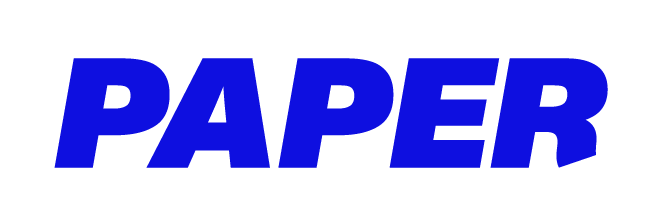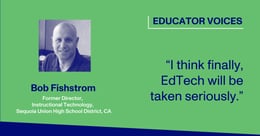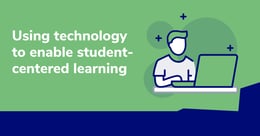
8 Reasons Educational Services Directors Are Working Harder Than Ever
Cary Johnson is the Educational Services Director at Placentia-Yorba Linda Unified School District (PYLUSD), in California. With the end of the school year approaching, Mr. Johnson offered the Paper team a snapshot of how PYLUSD has been adapting to distance learning over the last few months.
As we began delving into the situation at his district, Johnson shared that, though PYLUSD was one of the first districts in California to use Google Classroom, not all teachers were using it district-wide.
When they transitioned to full distance learning, Google Classroom was adopted across all of grades K-8. The leadership team gave high school teachers a choice between Google Classroom, Apex, and Canvas. Being familiar with tech platforms was helpful when moving to an online instructional environment, but needless to say, the district faced some hurdles along the way. As an Educational Services Director, Cary spoke on his district’s biggest challenges, takeaways, and future considerations.
Biggest Challenges
1. Calibrating parent, student, and teacher expectations
How much is the right amount of work? The leadership team has the daunting mandate of figuring this out. They have been receiving variable emails from parents. Some say: “I expect my kid to be on Zoom six hours a day with their teacher,” while others say: “twenty minutes is way too much for my kid.”
2. Meeting the needs of at-risk students
Every day, the leadership team at Johnson’s district discusses ways to help high-needs students, “but there are limitations about what we can do to address those kids’ needs.” A lot of the team’s focus has been on how to provide support to those students when they come back, explained Johnson. “All students are going to be losing ground, but those kids, in particular, are going to be losing a disproportionate amount of ground.” English Language Development (ELD) teachers are currently the support mechanism for students, helping them access their core content with less of a focus on instruction.
3. Not all students are attending online meetings
PYLUSD made the equitable decision that students’ grades can’t drop; they can only improve. Consequently, “there’s not an incentive for kids to show up,” meaning that if students know they have a passing grade, they are unlikely to continue attending classes online and complete assignments. Johnson explained that some students “don’t realize the bigger picture, that they’re losing ground and that they’re moving on to the next level next year,” and they’ll eventually have to make up for the lost instructional time. So the biggest issue with this, explained Johnson, has been conveying the message to kids and parents: Even though grades are set, learning needs to take place. According to Johnson, this challenge is the best example of how there’s a massive disconnect between what grades are and what students are learning. “What do grades really represent?” asked Johnson. The silver lining is that we can take a closer look at what grades genuinely mean and what they measure.
Teacher support takeaways
1. There was a diversity of readiness for online learning
While some teachers never opened Google Classroom, others were “experts and gurus.” School closures have shone a light on the variability of tech-expertise.
2. How to deliver professional development
In the past, the district struggled with how to get teachers to attend PDs. They’ve tried holding sessions after school, on weekends, and during the school day, but teachers seemingly prefer online asynchronous and synchronous PD. “We can really build on that more even when we get back to a more normal situation.”
3. TOSA's to facilitate distance learning
At the elementary level, PYLUSD assigned a TOSA to each grade level as the point of contact for each elementary teacher at that grade level. “In secondary, we only have two TOSAS, said Johnson, “we have an “at-will” signup for different Zooms every day on various subjects.” These sessions have been extremely popular; many teachers are signing up and giving positive feedback. “Those teachers’ speak teacher’ and trust our TOSAS, so that’s a good thing.”
Considerations moving forward
1. Teachers moving past the fear of the unknown
Johnson hopes that post-pandemic, more teachers will incorporate technology into their instruction. “The biggest issue for any change is the fear of the unknown, said Johnson, “so now our teachers have been forced to learn this, and I think they haven’t even had time to think about their fear; they’ve just had to complete a task.” He hopes that now that teachers are past that fear, “we can build on that, whether it’s a blended model or a more traditional brick and mortar model, that it can be augmented by online components.”
2. PYLUSD embracing technology
“We’re pretty conservative in the sense that we’re not usually at the front of the curve, or the middle, we’re right behind the curve when it comes to adopting something new,” thinks Johnson. He hopes that the shift to distance learning will help the district integrate technology more quickly and frequently.
On the other hand, Johnson stressed that though online learning has been around for 30 years, the reason education never went fully online is that person-to-person interaction is crucial: “There’s something to reading social cues that can only be done in person, not even over Zoom. One of the key things that makes an effective teacher is being able to read your audience. When you’re doing some lesson and its falling flat, you can be flexible and adjust. And I think that is limited when it comes to online platforms.”
Online platforms should extend learning, affirmed Johnson, and their purpose should be to augment or reinforce concepts rather than be the primary mechanism for learning. “And that’s what Paper does, right? It's augmenting student learning,” added Johnson, about Paper’s Educational Support System (ESS).
While technology has been the central focus of the educational services department, Johnson also brought attention to all the other ways that the district has been serving its students. The PYLUSD community is using creative ways to boost morale during these difficult times, such as sharing themed face masks, heart-warming videos, and customized yard signs for senior graduation. Johnson was proud to say that these displays are a testament to the collaborative nature of his district.





.jpg?width=260&height=136&name=Paper-Blog-Digital-Divide-v2%20(1).jpg)
